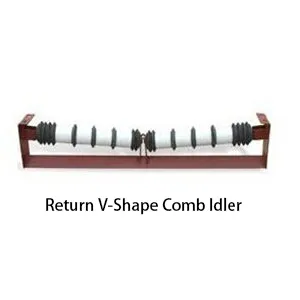 Afrikaans
Afrikaans  Albanian
Albanian  Amharic
Amharic  Arabic
Arabic  Armenian
Armenian  Azerbaijani
Azerbaijani  Basque
Basque  Belarusian
Belarusian  Bengali
Bengali  Bosnian
Bosnian  Bulgarian
Bulgarian  Catalan
Catalan  Cebuano
Cebuano  Corsican
Corsican  Croatian
Croatian  Czech
Czech  Danish
Danish  Dutch
Dutch  English
English  Esperanto
Esperanto  Estonian
Estonian  Finnish
Finnish  French
French  Frisian
Frisian  Galician
Galician  Georgian
Georgian  German
German  Greek
Greek  Gujarati
Gujarati  Haitian Creole
Haitian Creole  hausa
hausa  hawaiian
hawaiian  Hebrew
Hebrew  Hindi
Hindi  Miao
Miao  Hungarian
Hungarian  Icelandic
Icelandic  igbo
igbo  Indonesian
Indonesian  irish
irish  Italian
Italian  Japanese
Japanese  Javanese
Javanese  Kannada
Kannada  kazakh
kazakh  Khmer
Khmer  Rwandese
Rwandese  Korean
Korean  Kurdish
Kurdish  Kyrgyz
Kyrgyz  Lao
Lao  Latin
Latin  Latvian
Latvian  Lithuanian
Lithuanian  Luxembourgish
Luxembourgish  Macedonian
Macedonian  Malgashi
Malgashi  Malay
Malay  Malayalam
Malayalam  Maltese
Maltese  Maori
Maori  Marathi
Marathi  Mongolian
Mongolian  Myanmar
Myanmar  Nepali
Nepali  Norwegian
Norwegian  Norwegian
Norwegian  Occitan
Occitan  Pashto
Pashto  Persian
Persian  Polish
Polish  Portuguese
Portuguese  Punjabi
Punjabi  Romanian
Romanian  Russian
Russian  Samoan
Samoan  Scottish Gaelic
Scottish Gaelic  Serbian
Serbian  Sesotho
Sesotho  Shona
Shona  Sindhi
Sindhi  Sinhala
Sinhala  Slovak
Slovak  Slovenian
Slovenian  Somali
Somali  Spanish
Spanish  Sundanese
Sundanese  Swahili
Swahili  Swedish
Swedish  Tagalog
Tagalog  Tajik
Tajik  Tamil
Tamil  Tatar
Tatar  Telugu
Telugu  Thai
Thai  Turkish
Turkish  Turkmen
Turkmen  Ukrainian
Ukrainian  Urdu
Urdu  Uighur
Uighur  Uzbek
Uzbek  Vietnamese
Vietnamese  Welsh
Welsh  Bantu
Bantu  Yiddish
Yiddish  Yoruba
Yoruba  Zulu
Zulu Types and Features of Various Belt Cleaning Solutions for Optimal Efficiency
Understanding the Different Types of Belt Cleaners
Belt cleaners are essential components in modern conveyor systems, playing a crucial role in maintaining cleanliness and operational efficiency. These devices are designed to remove residual material buildup on conveyor belts, preventing contamination, reducing wear and tear, and minimizing maintenance costs. In this article, we will explore the various types of belt cleaners available and their specific applications.
Primary Belt Cleaners
Primary belt cleaners are typically the first line of defense against material carryback. Positioned at the discharge point of the conveyor, these cleaners are designed to scrape off any material that adheres to the belt after it has unloaded its cargo. They come in several configurations, including
1. Blade-style Cleaners These are the most common type; they use a single or multiple blades made of various materials such as rubber, polyurethane, or metal. The blade presses against the belt surface and removes any stuck material as the belt moves.
2. Tensioned Cleaners These cleaners utilize a tensioning mechanism to maintain contact pressure against the belt. This ensures consistent cleaning performance, even as the belt wears over time. They are adjustable and can be fine-tuned for optimal effectiveness.
3. High-Performance Cleaners These are advanced blade-style cleaners designed for challenging applications involving sticky or abrasive materials. They often have special features, such as modular blades that can be replaced individually or adjustable angles for enhanced cleaning capability.
Secondary Belt Cleaners
Secondary belt cleaners are installed further down the conveyor line, typically after the primary cleaner. Their primary purpose is to remove any remaining residues that the primary cleaner may have missed. These cleaners are especially important in applications where cleanliness is critical, such as food processing or pharmaceuticals. Key types include
1. Secondary Scraper Cleaners These devices feature a combination of scraper blades and other cleaning elements designed to minimize carryback further down the belt. They work with less pressure than primary cleaners but are still highly effective at maintaining cleanliness.
types of belt cleaners

2. Brush Cleaners These utilize rotating brushes that sweep the belt surface to remove remaining material. They are particularly effective for handling dust, fine particles, and materials that may cling stubbornly to the belt. Brush cleaners can be used alongside scrapers for enhanced cleaning performance.
3. Combination Cleaners Some systems combine both scraper and brush technologies, offering a comprehensive cleaning solution. These units are especially useful when processing varied materials, as they adapt to different cleaning needs simultaneously.
Specialty Belt Cleaners
Aside from the standard primary and secondary cleaners, various specialty cleaners cater to unique industry requirements or challenging application environments. These include
1. Chemical Cleaners In scenarios where traditional mechanical cleaning methods are insufficient, chemical cleaners can be applied to break down stubborn residues. These are particularly useful in food and pharmaceutical operations where hygiene is paramount.
2. Hybrid Cleaners These are custom-designed cleaning systems that adapt to specific conveyor applications. Hybrid cleaners may combine elements from both primary and secondary cleaners and integrate new technologies such as sensors to monitor cleaning effectiveness.
3. Heavy-Duty Cleaners Designed for challenging environments such as mining or bulk handling, heavy-duty cleaners are built to withstand harsh conditions and handle significant material loads. They are typically made from durable materials capable of sustaining high levels of wear.
Conclusion
In summary, choosing the right type of belt cleaner is vital for optimizing conveyor performance and extending the lifespan of the belt. Understanding the differences among primary, secondary, and specialty cleaners allows organizations to select the most appropriate systems for their applications. Proper maintenance and timely replacement of these cleaners can greatly improve operational efficiency, reduce downtime, and enhance overall productivity. In an industrial landscape where efficiency is key, investing in suitable belt cleaning technology is an indispensable decision for any business operating with conveyor systems.
-
Revolutionizing Conveyor Reliability with Advanced Rubber Lagging PulleysNewsJul.22,2025
-
Powering Precision and Durability with Expert Manufacturers of Conveyor ComponentsNewsJul.22,2025
-
Optimizing Conveyor Systems with Advanced Conveyor AccessoriesNewsJul.22,2025
-
Maximize Conveyor Efficiency with Quality Conveyor Idler PulleysNewsJul.22,2025
-
Future-Proof Your Conveyor System with High-Performance Polyurethane RollerNewsJul.22,2025
-
Driving Efficiency Forward with Quality Idlers and RollersNewsJul.22,2025





























